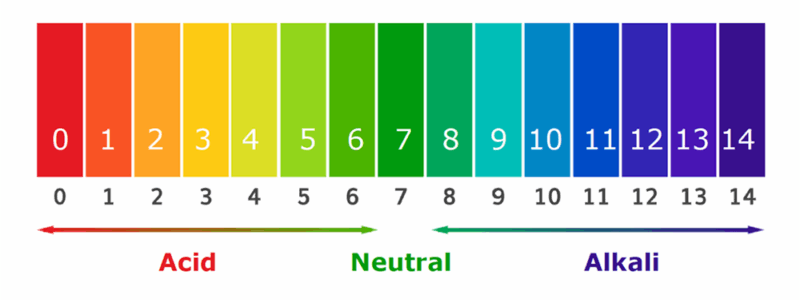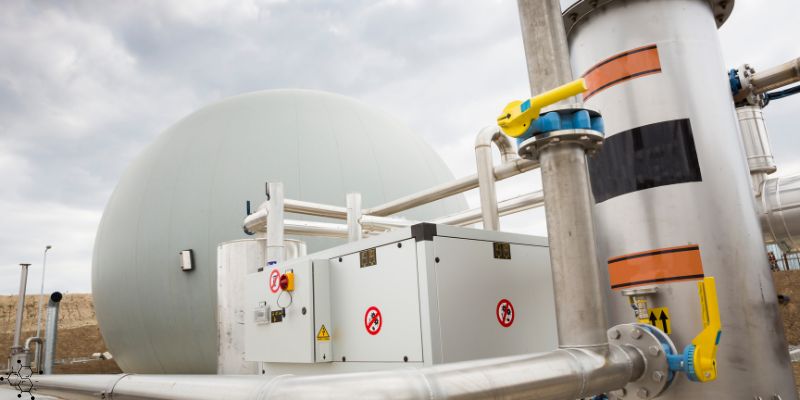Chemical treatment is one of the best methods to clean wastewater before returning it to the environment or reusing it. The chemicals used in the process remove harmful substances, heavy metals, oils, and other pollutants from water, something that the algae and tools cannot do. Many industries, such as metal finishing, chemical plants, textiles, and mining, use chemical treatment to make sure their wastewater doesn’t damage the environment or put people’s lives at risk. In this article, we discuss what chemical treatment of wastewater is, what methods are mostly used, and the pros and cons of cleaning water with chemicals.
What Is Chemical Treatment of Wastewater?
Chemical treatment of wastewater changes or removes dangerous materials from wastewater. These chemicals can:
- Make dissolved metals turn into solid particles (so they can be filtered out or collected)
- Neutralise acids and bases
- Destroy dangerous organic compounds
- Stick small particles together so they can settle at the bottom of the basins or tanks
This type of treatment is often used before or after other steps to make sure the water is clean enough for discharge or reuse.
6 Methods of Chemical Treatment of Wastewater
The following methods are usually used to adjust water’s pH, remove heavy metals from it, dissolve specific pollutants, and kill harmful microorganisms.
1. pH Adjustment (Neutralisation)
Many industrial wastewaters are too acidic or too alkaline. Therefore, the water engineers use chemicals like lime, soda ash, or acid to balance the pH level ( between 6 and 9).
2. Precipitation
Precipitation is used to remove heavy metals like lead, copper, nickel, or zinc from the wastewater. Chemicals are added to turn these metals into insoluble particles that can settle. The most common way is by adjusting the pH and adding special reagents like hydroxides or sulphides.
3. Coagulation and Flocculation
Some pollutants are too small to settle on their own. That’s why coagulants (like aluminium or iron salts) and flocculants (special polymers) are added to the water. These chemicals make tiny particles stick together and create larger flocs that can be seen or removed.
4. Oxidation and Reduction
Some chemicals and organic pollutants can only be destroyed or changed using oxidising or reducing agents.
- In oxidation, chemicals like chlorine, ozone, or hydrogen peroxide are used to remove electrons from the particles.
- Reduction can also change toxic metals into safer forms; for example, turning chromium(VI) into chromium(III).
Note: Advanced oxidation processes (AOPs) combine oxidants with UV light or catalysts to remove very stubborn pollutants.
5. Adsorption
Sometimes, the above-mentioned methods cannot completely clean the water. So, small amounts of pollutants remain in the water, even if they cannot be seen with the naked eye. In such situations, activated carbon or other adsorbent materials are used to remove these materials from the water. This is usually the last step before the water is released into the lakes or reused.
6. Membrane Filtration
After chemical treatment, the water may pass through membranes (like reverse osmosis or ultrafiltration) to remove very small particles and dissolved salts. This step helps produce high-quality water that can be reused in factories or safely released into nature.
7 Steps of Chemical Wastewater Treatment
Generally, chemical treatment of wastewater involves 7 steps; however, some of these steps might be skipped depending on the circumstances.
1. Water Equalisation
The wastewater enters the treatment plant from different parts of the factory and contains various pollutants. So, it should first be stored in a large tank and slowly mixed using air blowers or mixers. This prevents sudden changes in pH, temperature, or chemical load.
2. Neutralisation
The second step is to adjust the pH level of the wastewater. If the water is acidic, the engineers add alkaline chemicals like lime or sodium hydroxide. Also, if the water is alkaline, they add chemicals like sulfuric acid or hydrochloric acid.

3. Chemical dosing
When the water’s pH is adjusted, the engineers add certain chemicals to remove pollutants.
- Precipitation chemicals (like lime or sulphide salts) turn dissolved materials into solid particles.
- Coagulants (such as aluminium sulphate or ferric chloride) are used to reduce the electric charge between the pollutants so they can stick together and settle.
- Flocculants (like polymers) stick to very small particles to make them heavy and visible.
Also read: What Is a Chemical Dosing System & How Is It Done?
4. Mixing and reaction time
Once the chemicals have removed the pollutants, the water enters the mixing tanks. The water may be stirred rapidly (to spread chemicals evenly) or slowly (to distribute microorganisms throughout the tank evenly).
5. Solid–Liquid Separation
When the pollutants become solids, they are removed from the water through settling, filtration, or Dissolved Air Flotation (DAF).
6. Polishing
Even after solid-liquid separation, a small amount of pollutants can remain in the water. “Polishing” is the last step that removes such contaminants from the water before it’s released into nature or reused. There are 3 methods to polish water:
- Activated carbon is used to eliminate organic chemicals, colours, and odours.
- Replacing unwanted ions with harmless ones.
- Reverse osmosis (RO) is used to reduce the amount of salts and dissolved materials.
7. Sludge disposal
When water is being treated, it leaves a byproduct called sludge. Getting rid of sludge is a huge challenge, especially in large wastewater treatment plants. There are different ways to dispose of sludge, but here are three of them:
- Removing water from the sludge using pressing machines and centrifuges.
- Drying the sludge using heaters or the sun.
- Using high-frequency sound waves to break the sludge flocs.
Also read: Excellent Techniques for Reducing Sludge in Wastewater Plants
Pros and Cons of Chemical Treatment of Wastewater
Benefits
- It removes heavy metals and toxins that biological processes can’t treat.
- It is fast and reliable.
- It can treat different types of industrial wastewater, no matter what kind of chemicals are in it.
- It improves water quality so it can be reused for cooling, generating steam, and cleaning.
- It is done based on environmental standards, so it won’t damage the flora and fauna of the region.
Drawbacks
- Chemicals used in the process are expensive. It also takes a lot of space to store them.
- Chemicals create sludge that must be handled carefully; otherwise, they would hurt the aquatic life or pollute the soil.
- The whole process should be monitored constantly and carefully. If a higher or lower level chemical enters the water, the treatment fails.
- The systems used for chemical treatment of wastewater (like membrane filtration) consume a high level of energy, so they are not as eco-friendly as they should be.
5 Tips for Better Chemical Wastewater Treatment
- Always test the wastewater before treatment to know how much pollutant is in the water, what type of contamination exceeds, and what chemicals are needed.
- Use both chemical and biological processes to achieve better results.
- Use automatic dosing and monitoring systems to control pH and chemical usage. These machines are almost error-free, while humans may make mistakes.
- Clean tanks, mixers, and dosing pumps regularly to make sure the sludge doesn’t damage their parts.
- Follow local regulations and safety standards to keep the environment safe.

A Quick Review
The chemical treatment of wastewater helps keep our environment and cities safe. Treating water with chemicals might sound contradictory, but it helps neutralise acids, remove metals, and eliminate harmful chemicals to clean dirty water. By controlling the system and following the book, this process turns polluted water into something clean and safe that can be used again. AquipTech (AIMEQUIP) is an Australian company that focuses on treating wastewater and keeping it safe for the environment. Meet the team and get to know our services through this link.
FAQs about Chemical Treatment of Wastewater
- Which chemical is most used to disinfect the wastewater?
The most-used chemical to disinfect the wastewater is chlorine.
- Are chemicals used in water treatment harmful to humans?
Yes. If too much chemical is added to wastewater, it can damage human lives.
- Do treatment plants keep the water safe?
Yes, the main purpose of dosing systems is to measure and add the exact amount of chemicals needed. Also, the engineers and operators monitor every step and prevent unwanted incidents.
- What is the best pH level for drinking water?
A healthy pH level for drinking water is between 6.5 and 8.5

